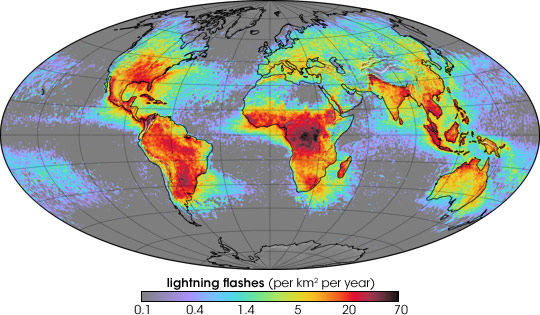This question has been going around my head for a while. I’ve been living in England for a year and I rarely saw a flash of lightning once. In Spain, you can see many thunderstorms, especially in summer. So, why are these so unusual in this part of the world?
First of all, we need to understand some concepts: the difference between storm and thunderstorm, how it comes a storm and what triggers thunders and lightning.
What is a storm?
To begin with, the word Storm doesn’t have any unique definition. A storm is a violent disturbance of the atmosphere with strong winds and usually rain, thunder, lightning, or snow. It comes up when there’s a low-pressure system (do you want to experiment with atmospheric pressure? Click here).
What is a thunderstorm?
A thunderstorm is a storm that is accompanied by lightning, thunders, strong winds, heavy rain and/or hail. When water or moisture evaporates from the Earth’s surface, it condenses in upper levels of the atmosphere forming a cloud. Also, when warm air rises into cool air, some wind current could arise. This process is called convection (warm air tends to go up). If water drops get to the higher levels in the clouds, they can freeze, forming ice crystals and hail. At this moment, a separation of positive and negative charges turn the cloud into an electrically unstable atmosphere. Positive charges usually accumulate in the upper part of the cloud, whereas electrons are commonly in the lower part.

To restore the electroneutrality, charges recombine in three different ways, forming lightning:
- Cloud to cloud. The majority of lightning is produced among clouds.
- Cloud to ground.
- Cloud to air.

You can also see this explaining video on BBC: Thunderstorm.
Lightning is a discharge, like an electric shock; the way to neutralize charges. Since light travels for miles through the air, the air gets warm so quickly, that gets pressurized, releasing this pressure as a thunder. Light travels through the air much faster than sound (typically under vacuum, the speed of light is 300,000,000 m/s, whereas the speed of sound is 340 m/s) and that’s why we always see the lightning and some seconds later, we hear the thunder. With the speed of sound, we can roughly work out how far we are from the storm. For instance, if you see some lightning and you hear the sound of the thunder 5 seconds later, the storm is around 1 mile far away (340 m/s x 5 s = 1700 m).
Now that we know how lightning is formed…let’s move from the physical to the physicochemical part of a thunderstorm.
Which is the colour of lightning?
Typically, all of them shine in blue-white or purple-white. This is the result of two main phenomena.
- Incandescence: produced due to the high temperatures of the discharge (around 30,000 K). It glows blue-white.
- Luminescence: after excitation of nitrogen, the electrons go back to their original energy states. This emission of light is highly energetic.
Of course, there are other factors that can change the emission colours of lightning, as moisture, dust and pollution. Furthermore, some red or blue colours in thunderstorms are associated with some atmospheric phenomena called blue jets, sprites and elves (learn more).
But let’s answer our question: why are there no thunderstorms in the UK? Could you make a guess? If thunderstorms form when it is warm in the surface, they can’t occur in the poles, for example, so it is required warm areas (or summer times). Apparently, lightning is rarely expected above 50º latitude. In the next picture, you can see the patterns of lightning activity from 1997 to 2002.

As you can observe, the map shows little incidence of lightning in the UK…and as you know, the UK is not a really a warm place…so here is the answer! Although I am looking forward to seeing some!